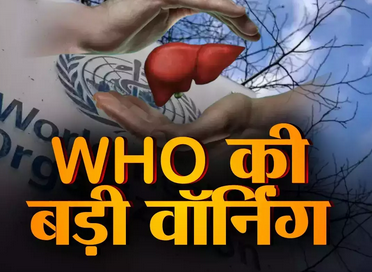Express View: Hepatitis warning
A WHO report has flagged the seriousness of India’s Hepatitis challenge. With nearly 3 crore Hepatitis B patients and more than 50 lakh Hepatitis C patients, the country’s burden of these liver diseases is the second highest in the world. They claimed more than a lakh lives in 2022. Even more worrying is that a very small fraction of the infected come under the Diagnostic ambit . Less than 30 per cent of Hepatitis C cases are detected; the figure for Hepatitis B is less than 3 per cent. The National Viral Hepatitis Control Programme (NVHCP) aims to eliminate Hepatitis C by 2030 and “achieve significant reduction in morbidity and mortality associated with Hepatitis B” by that year. The WHO report is a warning that the country has much work to do to attain this target. However, the global health agency has also struck a note of optimism : “ Course correction between 2024 and 2026 can bring NVHCP on track”.
Hepatitis B and C are spread through contact with contaminated blood. Hepatitis B can lead to the scarring of liver tissues and increase the risk of cancer. Diagnosis is complicated — carriers can harbour the virus for years without appearing to be diseased. They can infect others even when they do not show symptoms — these often show-up only when the pathogen takes an aggressive form. There is no cure, though treatment can help manage symptoms to an extent . The NVHCP, initiated in 2018, provides free testing and medication . However, the WHO report indicates that the programme hasn’t touched most patients. Rigorous adoption of blood screening protocols in the past 20 years has substantially reduced the risks from transfusion . Most of the Hepatitis B infections in the country are today passed on from mother to child. Vaccination can prevent the disease but the highest immunity is conferred when the child is administered a jab just after birth. In India, less than 50 per cent infants get vaccinated this early. This is largely to do with the low rate of institutionalised births in large parts of the country. Informing community healthcare workers with vaccination protocols could increase the efficacy of the immunisation regime .
Hepatitis C is far easier to treat. Anti-virals can cure the disease and prevent long-term liver damage. According to WHO, treatment costs in India are amongst the lowest in the world. But 70 per cent patients eluding the diagnostic network speaks of a healthcare deficit that must be addressed immediately. Whether it’s containing viral diseases like hepatitis or bacterial infections like TB, there can be no shortcuts to expanding the country’s medical facilities.
